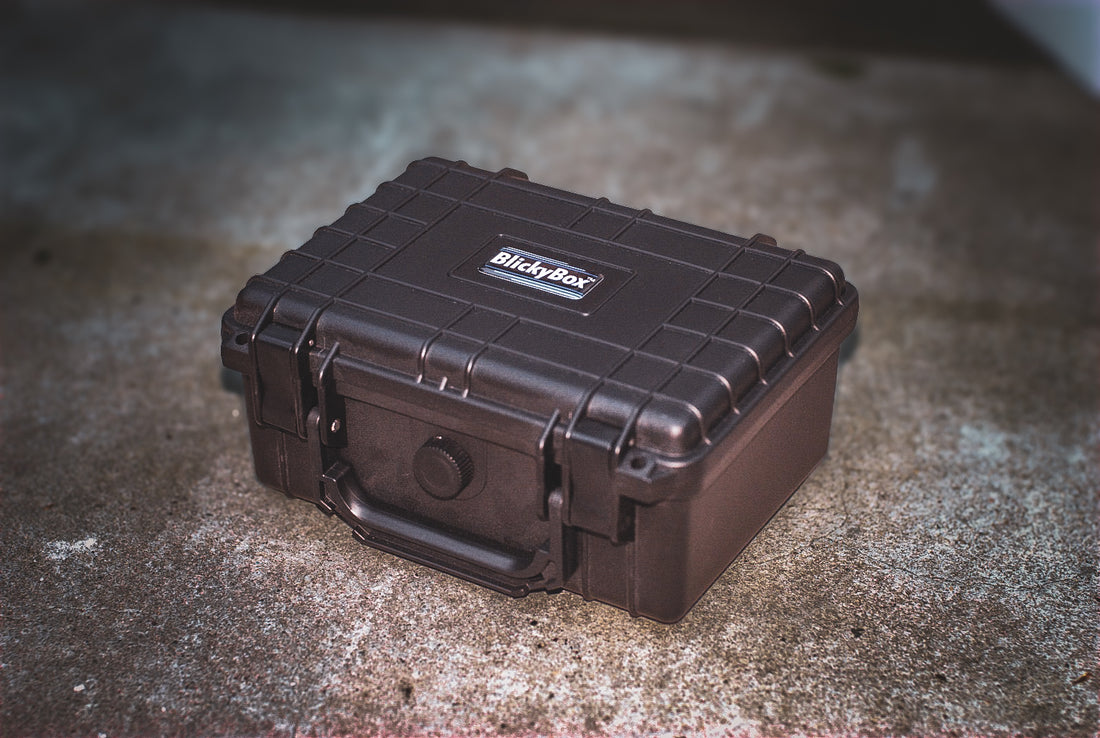
A Guide to TSA-Approved Gun Cases: Safe and Compliant Travel
Share
A Guide to TSA-Approved Gun Cases: Safe and Compliant Travel
Traveling with a firearm can seem daunting, especially given the strict guidelines set by the Transportation Security Administration (TSA) and airline policies. However, having a reliable, TSA-approved gun case can make the process much easier, ensuring you stay compliant with regulations while keeping your firearm secure. Here’s a comprehensive guide on what to look for in a TSA-approved gun case, the rules for flying with firearms, and tips to make your travel experience as smooth as possible.
1. What is a TSA-Approved Gun Case?
A TSA-approved gun case is a secure container that meets the TSA's specific guidelines for transporting firearms in checked baggage on commercial flights. These guidelines are designed to ensure that firearms are transported safely and do not pose a security risk. The TSA doesn't directly approve or certify gun cases, but they set requirements that all firearm containers must meet for air travel. Meeting these requirements qualifies a case as "TSA-approved."
2. TSA Requirements for Gun Cases
To ensure compliance, any gun case used for air travel must meet the following TSA standards:
Hard-Sided Case: The case must be made of a hard material (like durable plastic, metal, or composite) to prevent unauthorized access and provide maximum protection.
Lockability: The case must have a secure locking mechanism. The TSA requires the case to be locked with a non-TSA-accessible lock, meaning only you should have the key or combination. Multiple locking points add to the security of the case, ensuring no part of the case can be pried open.
Firearm Secured Inside: The firearm must be unloaded and placed inside the case. It should be securely fitted to prevent movement within the case during transit, typically through foam inserts or straps.
Ample Protection for Components: Separate ammunition storage is also regulated. Some gun cases come with additional compartments or cases specifically for ammunition, which must be secured and locked separately from the firearm in most cases.
3. Key Features to Look for in a TSA-Approved Gun Case
When shopping for a TSA-approved gun case, consider the following features to enhance compliance, safety, and convenience:
Durability and Impact Resistance: Choose a case built from high-impact plastic, metal, or a composite material that can withstand rough handling. Materials like ABS plastic or aluminum offer excellent durability.
Weather Resistance: Look for waterproof or weather-resistant cases to protect your firearm and accessories from moisture, dust, and temperature variations.
Customizable Foam Inserts: Cases with customizable foam inserts allow you to shape the interior to fit your specific firearm, magazines, and accessories, preventing movement and reducing the risk of damage.
Multiple Locking Points: A good case will feature several reinforced lock points, ensuring it can be securely closed from multiple angles.
Compact and Lightweight Design: If you’re traveling with a handgun or small firearm, a more compact, lightweight case can make it easier to carry and fit within luggage weight restrictions.
4. Preparing Your Firearm and Gun Case for Air Travel
To ensure a hassle-free experience at the airport, follow these steps when preparing your firearm and gun case for travel:
Unload Your Firearm: Make sure the firearm is completely unloaded, with the chamber and magazine empty.
Secure Ammunition: Store ammunition separately in an approved container, following both the TSA and airline-specific policies on how it should be packed.
Lock the Case Properly: Use sturdy, non-TSA locks, and double-check all locking points.
Declare the Firearm: At the check-in counter, inform the airline representative that you’re traveling with a firearm. You’ll be asked to fill out a firearm declaration form and may be required to demonstrate that the firearm is unloaded.
5. Tips for a Smooth Airport Experience
Check Airline Policies: Each airline may have slightly different rules regarding firearm transport, so check in advance to avoid surprises at check-in.
Arrive Early: Allow extra time for the firearm declaration process, as TSA or airline staff may need additional time for inspection.
Keep Keys Accessible: Keep keys or combinations for the locks with you, as you may need to unlock the case if requested by TSA for inspection.
A reliable, TSA-approved gun case is essential for safe, compliant firearm travel. By selecting a high-quality, lockable, hard-sided case that meets TSA and airline requirements, you can transport your firearm securely and with peace of mind. With the right preparation, traveling with a firearm can be a straightforward process that allows you to focus on your journey.
Disclaimer: This article is for informational purposes only and should not be considered legal advice. Travelers are responsible for understanding and complying with all TSA, airline, and state and federal regulations regarding firearm transportation. Rules and regulations can vary by airline and change over time. It is recommended to check with the TSA and your airline before traveling to ensure compliance. Failure to adhere to these guidelines may result in fines, legal penalties, or confiscation of your firearm.